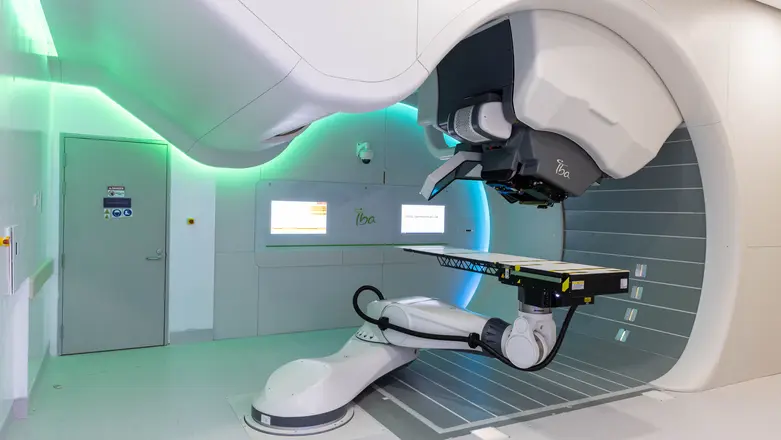

Mount Elizabeth Proton Therapy Centre
Our Edge
How is proton therapy different from traditional radiation therapy?
Conventional radiotherapy using X-rays to deliver radiation to the tumour and everything in its path. This means that healthy tissues near the tumour could receive a significant amount of radiation and could be damaged.
While most adults can absorb such radiation and their bodies can repair the damage, there may be additional risk if the exposure is near a vital organ, such as the heart or brain. It is also not ideal for children as their bodies are still developing, and exposure to radiation may lead to conditions such as hearing and vision loss, heart diseases, or secondary cancers.
Proton therapy, on the other hand, is a more precise form of radiation therapy.
Proton beams have less entry dose and no exit dose. Hence, they are able to spare the surrounding organs and healthy tissues, especially for those organs sitting right behind the tumour. Additionally, proton beams can be more precisely controlled compared to X-rays, allowing specialists to safely deliver higher doses of radiation to tumours.
Why choose Mount Elizabeth?
We are one of the earliest private hospitals in Southeast Asia to introduce proton beam therapy.
With procedures such as this, we have helped patients broaden their treatment options, with the goal of minimising the side effects of cancer treatment and increasing survival outcomes.
At Mount Elizabeth Hospitals, our skilled and compassionate cancer care teams, doctors, nurses, and allied health professionals are supported by modern technology and facilities to ensure our patients receive the full spectrum of care.
In addition, our Mount Elizabeth Proton Therapy Centre is equipped with:
- An open gantry to ease patient access and set-up for proton therapy
- Unique instantaneous imaging technology to provide comprehensive image verification for patient
In addition to proton therapy, our medical teams also have been providing radiotherapy procedures for more than 30 years in our system by using linear accelerators (Linac), TomoTherapy, Gamma Knife, and brachytherapy to help more cancer patients achieve their treatment goals. A full range of different type of radiotherapy solutions are available for specialists to use based on the individual patient’s care needs.
 Brain & Spine Care
Brain & Spine Care

